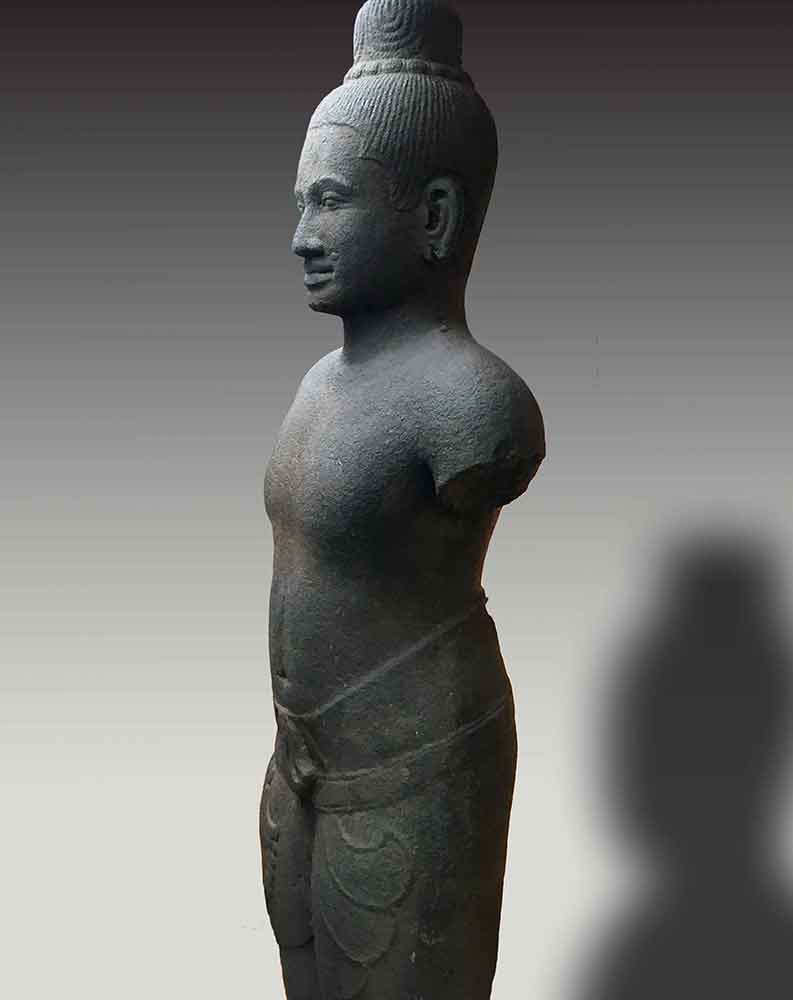|
Cambodia 11th c.; Angkor Period, Baphuon Style sandstone 37 inches (93.98 cm) |

Detail: side view SHIVA Grey sandstone Khmer, early Angkor period Baphuon style Second half of the 11th century AD Height: 37 in. (94cm) Provenance: Connie Mangskau 1960's, by inheritance thereafter Enlivened with potential energy, the idealized form of Shiva stands in samapada, with his weight evenly distributed. The sculpture is a superb example of the Baphuon style, replete with the subtle asymmetries that give rise to its compelling nature. The concept of divine kingship, or Devaraja, was central to Khmer society. Frequently images of Khmer rulers exhibit elements of portraiture integrated with iconography reserved for deities. This sculpture is such an example. Here, Shiva stands in the samabhanga, or single bend pose. He wears an elaborate sampot around his hips, its upper edge hugs his abdomen in a sweeping curve. The narrow pleats ripple in subtly irregular striation, and the edges are tied in a butterfly knot nearly at the middle of his back and fall in an array of pockets and folds at the front, each with a renewed elegance. The fabric is pulled between the legs and secured with a careful arrangement of folds beneath a flat belt. Across the figure’s left leg, one edge of the fabric is pulled up and looped beneath the belt to fall into a splayed pocket. Where the center of the upper hem sweeps beneath the slightly extended abdomen, an edge peeks outward from within. Shiva’s masculine body is carved with the restrained sensuality that is characteristic of Khmer sculpture. His upper torso is composed of rounded contours culminating in the face which bears an engaging expression. Eyes open, his focus is outward, the incised third eye reveals his identity as the Hindu God Shiva. His full lips form a sweet smile, and are framed by a single incised line indicating a mustache. His chin is softened by a delicate beard, and his hair is plaited in rows that defy a rigid geometry, rising to a rounded chignon. |
|
|